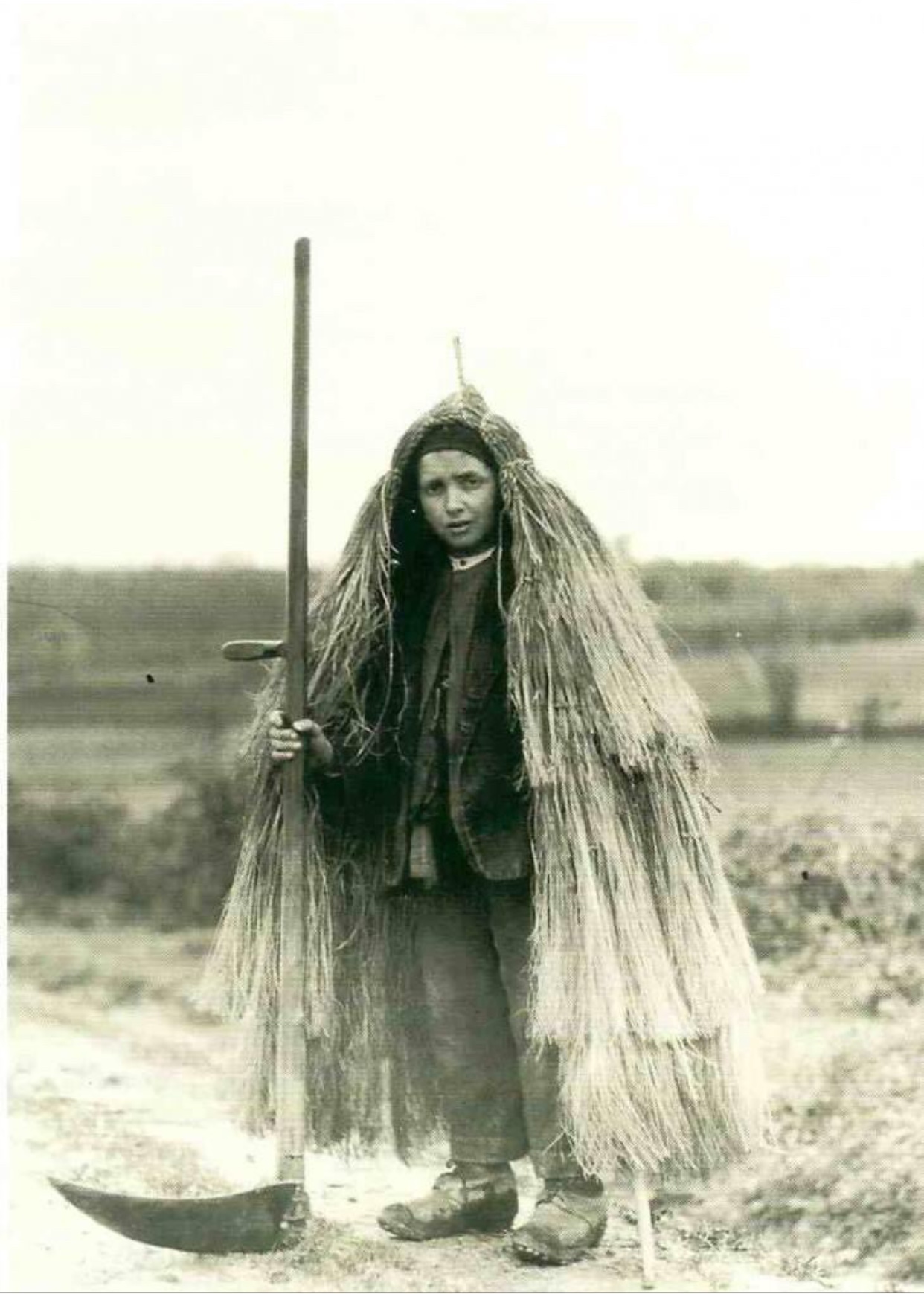Drawing upon the rich tapestry of traditional Galician life, the Carapucho emerges not merely as a garment but as a testament to the ingenuity and resilience of the Galician people, especially the rural populace. This unique creation, fashioned from straw, reflects a harmonious blend of necessity and artistry, deeply embedded in the historical narrative of Northern Spain.

The Essence of Carapucho
The rural areas of Galicia have always been subject to harsh environmental conditions, with cold rains characterising much of the year. The Carapucho was born out of a practical need to shield oneself from these relentless downpours. However, its significance transcends its utility, marking a cultural identity that has weathered the storms of time.
Crafted from straw, the Carapucho served as a makeshift raincoat for peasants. This material choice was no accident; straw was readily available and offered effective waterproof characteristics, making it an ideal resource for protective clothing in a pre-industrial context. The craftsmanship involved in creating a Carapucho demonstrates a profound understanding of the materials at hand and a creative spirit that turned simple agricultural byproducts into a vital part of everyday life. The process of making a Carapucho involved more than merely fashioning a hat or a cloak; it was a meticulous craft that required patience, skill, and a deep connection with the natural environment. The peasants would gather straw or reeds, materials that were in abundant supply across the Galician countryside. These were then intricately woven together to form a coherent structure. The result was not only functional, protecting the wearer's entire head and, in some cases, even the shoulders and upper body from the rain, but also allowed for free movement, which was crucial for working outdoors.

Moreover, the creation of the Carapucho was a communal activity, reflecting the collectivist spirit of rural Galicia. It was common for families or groups of neighbours to come together, sharing techniques and stories as they worked. This not only facilitated the practical transmission of knowledge across generations but also strengthened community bonds. Each Carapucho, therefore, was imbued with a sense of shared identity and collective resilience.
Beyond Practicality: Symbolism and Identity
While the primary function of the Carapucho was undeniably practical, its cultural significance cannot be overstated. In a region where weather could dictate the rhythm of daily life, the ability to carry on work regardless of the elements was both a necessity and a point of pride. The Carapucho came to symbolise the hardiness of the Galician people, embodying their unyielding spirit and close relationship with the land.
As industrialisation and modern advances introduced new materials and clothing options, the use of the Carapucho in its traditional form diminished. However, it remains a potent symbol of Galician heritage, evoking memories of a time when life was intimately tied to the rhythms of nature and community was forged in the face of adversity.
The Carapucho Today
In contemporary times, the Carapucho holds a special place in the cultural memory of Galicia. While no longer a common sight in the fields, it endures as an emblem of Galician identity, celebrated at cultural events and festivals. Artisans and historians alike continue to explore and preserve the techniques used to create these remarkable garments, ensuring that the knowledge does not fade into obscurity.
The Carapucho is much more than a historical curiosity; it is a vibrant thread in the fabric of Galician culture, representing the convergence of necessity, creativity, and community.